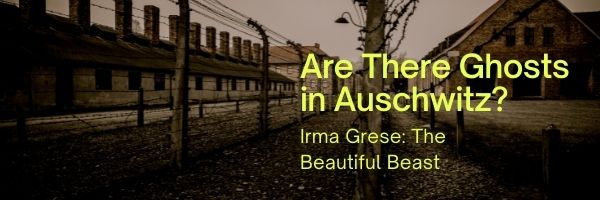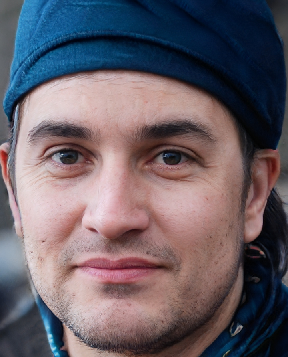Table of Contents
Are there ghosts at Auschwitz? Many have tried to answer this question without coming to a definitive conclusion.
Perhaps because of the truly wicked and depraved acts that were perpetrated in the death camps as part of the Nazi’s final solution, a thorough investigation into the paranormal has never been performed.
If ghosts linger where there has been emotional turmoil, tragedy and misery then surely they exist at Auschwitz.
The only evidence that we have to base our opinion on is the evidence of the thousands of visitors who make the pilgrimage to Auschwitz every day, visitors who leave deeply affected by what they have seen, heard and felt.
Auschwitz: A Brief History
Auschwitz was a series of concentration camps set up in Poland in 1940, to house political prisoners. Named after a nearby town, its title now resonates with a different meaning and fills most who hear it with horror.
By 1941 the camps had become part of Hitler’s final solution to the Jewish question. Jews, Russians, political prisoners, homosexuals, Jehovah’s Witnesses and Romani were sent to the camps for extermination.
Stripped of clothes, belongings, even the fillings in their teeth, the weak were sent to the gas chambers and thrown into mass graves.
Those that were stronger did not survive long. Forced to work in freezing conditions, starved, suffering from infectious diseases, their life expectancy was only three months.
Atrocity after atrocity was committed until it was difficult to imagine what else could be done to these poor people.
The Nazis unfortunately were more imaginative and began to perform the most horrific experiments on those that entered the camps. With a massive pool of siblings and twins to operate upon, the evil Dr. Mengele began performing surgery on children and adults without any concern for their welfare.
Few escaped the camps, but those who did inform the Allied forces of their conditions. Sadly, they were not believed. The Allies refused to bomb the camps.
It was not until the end of the war when they were liberated by British and American troops that the truth was revealed and the world hung its head in sorrow and shame.
Auschwitz Today
At the end of the war, most of the concentration camps were destroyed. Auschwitz I and II remained intact, however.
Many felt that to obliterate the camps completely was to obliterate the memory of something which should never be forgotten.
Today the camps are a tribute to those who died and are visited by thousands every year. Many of these people are profoundly moved, whether it is the enormity of history that moves them or the throngs of souls lost, it is hard to say.
The sadness of Auschwitz is often described as overwhelming. Both men, women and often teenage children who may know little of the camp’s history describe a palpable sorrow as you walk through its gates.
Ironically, the legend inscribed over the gates Arbeit Macht Frei means work sets you free, surely a final insult.
The camp itself is now characterized by an eerie silence, few people speak but listen intently to the information guides as they move around the camp.
The gas chambers are now sealed with concrete and the displays kept simple, but there is much to see and shock.
Often in tears, many have reported feeling tiny ghostly hands slip into theirs as they stop to look at the heaps of shoes taken from prisoners, a young girl’s fancy sandal and a baby’s tiny first shoes peeping from the pile.
Others have reported that their cameras jammed as they tried to photograph the mountain of human hair shaved from people entering the camp.
Orbs and strange shapes have been recorded dancing about the mangled mounds of broken spectacles and redundant, battered suitcases.
Voices have been heard pleading for help and assistance as visitors have walked through the simple numbered bunk beds where so many sought refuge from their misery in sleep.
Others have felt touched gently by imploring fingers as they moved through the camp.
Irma Grese: The Beautiful Beast
Irma Grese is perhaps the most infamous and notorious guard that came out of Auschwitz. If ever there was proof that evil could exist within beauty, she was surely it.
Born in Germany in 1923 she had quite an unhappy life. Bullied by her schoolmates and left with a feeling of abandonment when her mother committed suicide, she became fascinated by the Nazi Female Youth.
In 1940 she was stationed at her first concentration camp. When her father could not dissuade her from taking up this role, he disowned her.
It was clear then that she had a moral compass in her life but chose to ignore it. In 1943 she was sent to Auschwitz where her career flourished.
Placed in charge of the 30,000 female Jewish prisoners, it was she who decided who was sent to the gas chambers and who survived, starving and degraded in the misery of the camp.
In 1945 she was sent to Bergen- Belsen. Soon after the war ended and she was arrested. As the world’s eyes were opened to the atrocities within the extermination camps a voice was finally given to the victims.
Grese was described as ‘the beautiful beast’ by those who testified against her at her trial. Her story was one of cruelty, murder and torture.
Rumored to be the lover of the camp commander at Auschwitz and the evil Dr. Mengele, she indulged in sexual excess.
Holding the Jewish people in utter contempt she is said to have owned a light shade made of the human skin of her victims.
At her trial, Grese was found guilty of her crimes, despite protesting that she was only carrying out orders. Controversy surrounds her execution, some reports suggest that she was hanged by the British hangman Pierrepoint, others give a different story.
Perhaps blinded by her beauty a number of people refused to hang Grese. In the end, a Jewish hangman Lutzheim volunteered.
Contemptuous of the Jewish people until the bitter end, Grese swore that if he touched her she would return to haunt those who sentenced her to death.
In 1948 she was first spotted wandering near the gas chambers in Auschwitz. Ironically her ghost did not return to haunt those who hung her, but to wander around the camp where she once flouted her power and caused so much suffering.
Conclusion
Are there ghosts in Auschwitz? Certainly, many people who visit the death camps today have reported unexplained phenomena.
Considered to be a war grave, many feel that a thorough paranormal investigation of Auschwitz would be inappropriate until the wounds of the past are fully healed.
If you accept that ghosts exist where there has been great emotional turmoil, suffering and tragedy, then surely they must exist in Auschwitz.
How awful it is though, to imagine that these poor tortured souls remain tied to a place where they endured so much. How ironic also, that the only full apparition witnessed at Auschwitz is that of the beautiful beast, Irma Grese.
Divine retribution?
One can only hope.
Do we really need proof of ghostly presences at Auschwitz though to know that the souls of so many live on?
Perhaps the legacy of this awful place where man’s inhumanity to man was laid bare for the world to see, is that so many people who visit Auschwitz today, leave truly haunted by what they have experienced.
Obsessed by ghost hunting and all things paranormal. Chris spends a lot of time (some would say too much time) investigating ghosts and spirits and documenting stories and paranormal communication. He teaches aspiring ghost hunters in the Paranormal Academy.











